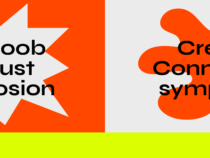05.03.–30.10.2016
On Saturday 5 March at 11.00 the exhibition “The River Runs Through Here… Chapters from the Art History of Tartu” will open in Tartmus. This exhibition is one possible art history based on the collections of Tartmus. It offers an overview of the changes that took place in the art life of Tartu and Estonia in the 19th and 20th centuries. On display will be legendary works by numerous artists introducing the museum’s rich art collection. The exhibition will remain open until 30 October.
Since Tartmus lacks the space for a permanent exhibition, we will begin exhibiting overviews of Estonian art based on the museum’s collections, and these will remain open for longer periods. Each of these is based on the selection of the curator in charge. The first exhibition, “The River Runs Through Here… Chapters from the Art History of Tartu” is curated by the long-time curator and art expert Tiiu Talvistu, who has researched the history of art in Tartu for decades and has also introduced it to visitors to the museum. The exhibition has a full English and Russian translation.
We will begin with longer exhibitions that are exclusively based on the collections of Tartmus. This marks a new exhibition policy of introducing the museum’s collections to a more general audience. The starting point of the first exhibition is the 19th century, when the Drawing School was established at the newly re-opened university. This led to Tartu becoming an art town. In the Drawing School, which remained open for almost the entire century, the teaching method was based on the system of art academies with their roots in realism. The foundation of the rest of the studies was drawing, which was based on copying engravings and plaster copies.
The Young Estonia generation of the new century tried to break the academic canon and strove for contacts with the modern art of that era. Some of the artists from this generation, Mägi, Vabbe, Starkopf, et al., started the brightest chapter in the art life of Tartu: the art school Pallas. The method in this school was based on nature studies and on drawing, but the ideals and the role models of the students varied.
The Stalinist era socialist-realist canon returned to 19th century academism and erased any freedom of creative expression. In the 1960s, the avant-garde Tartu Circle started to open art up once again. They were the last artists to receive their education at the Tartu State Art Institute. The next chapter in the city’s art life was once again connected to the University of Tartu and its Art Studio, run by Kaljo Põllu and Andrus Kasemaa, where the studies were free from academic conventions. The changes that happened in the art life of Tartu after 1988 are revealed by our museum’s archival project Tartu88.
Works by various artists are exhibited: the Baltic Germans Karl August Senff, August Mathias Hagen, Woldemar Friedrich Krüger and Julie Wilhelmine Hagen-Schwarz; the Young Estonia artists Kristjan Raud, Nikolai Triik and Konrad Mägi; the Pallas teachers and students Aleksander Vardi, Andrus Johani, Kaarel Liimand, Eerik Haamer, Karin Luts, Elmar Kits, Karl Pärsimäe, Lepo Mikko and Endel Kõks; the members of the Tartu Circle Ülo Sooster, Valve Janov, Kaja Kärner and Lembit Saarts; the University Art Studio participants Kaljo Põllu, Andrus Kasemaa, Miljard Kilk, Enn Tegova and Ilmar Kruusamäe, and many others.
First curator-tours will be held on 5 March at 14.00 and 9 March at 17.00
Exhibition curator: Tiiu Talvistu, design: Mari Kurismaa, and graphic design: Mari Kaljuste.
Exhibition team: Nele Ambos, Rael Artel, Karl Feigenbaum, Mare Joonsalu, Margus Joonsalu, Heiti Kulmar, Julia Polujanenkova, Kristel Sibul and Ago Teedema.
We would like to thank the University of Tartu Art Museum, the Cultural Endowment of Estonia and the Tartu town government for their support.


